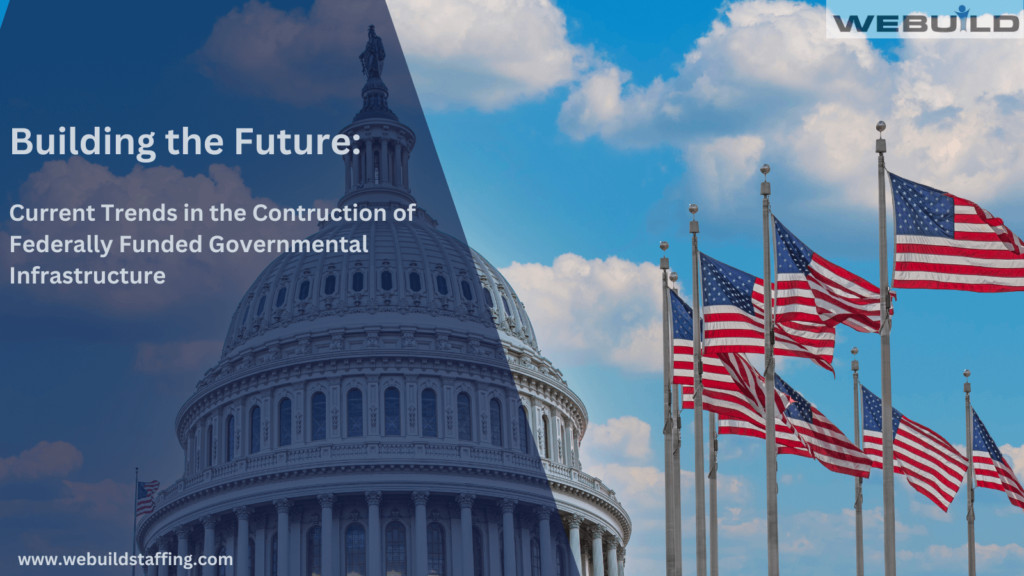Federal infrastructure is the backbone of any nation’s economic growth and development. In recent years, governments worldwide have recognized the importance of investing in infrastructure to drive progress and create jobs. The United States is no exception, with the federal government playing a pivotal role in funding infrastructure projects. In this blog post, we will explore the current trends in construction of infrastructure projects funded by the federal government, shedding light on key developments, challenges, and opportunities in this dynamic sector.
Bipartisan Support for Infrastructure Investment
One of the most prominent trends in federal infrastructure funding is the bipartisan consensus on the need for substantial investment. Both major political parties in the United States recognize the urgent requirement to modernize the country’s aging infrastructure. This consensus has led to significant legislative initiatives and increased funding for infrastructure projects.
Historic Levels of Funding
Federal infrastructure investment has reached historic levels. The Infrastructure Investment and Jobs Act, passed in 2021, allocated $1.2 trillion over eight years for various infrastructure projects. This massive injection of funds covers a wide range of areas, including transportation, broadband expansion, water systems, and more.
Emphasis on Sustainability and Resilience
Sustainability and resilience have become core principles in federal infrastructure projects. There is a growing focus on building infrastructure that is environmentally friendly, energy-efficient, and resilient to the effects of climate change. This includes investments in renewable energy, electric vehicle charging networks, and flood-resistant infrastructure.
Expanding Broadband Access
The COVID-19 pandemic underscored the importance of broadband connectivity. Federal funding is increasingly directed towards expanding broadband access to underserved and rural areas. This trend aims to bridge the digital divide and promote equitable access to education, telehealth, and economic opportunities.
Modernizing Transportation Networks
Transportation infrastructure is a major beneficiary of federal funding. Initiatives to modernize and expand transportation networks include investments in roads, bridges, public transit systems, and passenger rail. The aim is to improve safety, reduce congestion, and enhance connectivity.
Promoting Green Infrastructure
Green infrastructure, such as parks, green spaces, and sustainable stormwater management, is gaining traction in federal projects. These initiatives promote environmental conservation, enhance quality of life, and mitigate the effects of urbanization.
Public-Private Partnerships (PPPs)
Public-private partnerships have become a popular approach to infrastructure development. These collaborations between the government and private sector leverage private investment and expertise to finance, design, build, and operate infrastructure projects. PPPs can accelerate project delivery and optimize resource allocation.
Innovation in Construction Technology
The construction industry is experiencing a technological revolution. Federal infrastructure projects are increasingly incorporating innovative construction technologies, such as Building Information Modeling (BIM), drones for site inspection, and 3D printing for building components. These advancements improve efficiency and reduce construction time and costs.
Workforce Development
With an influx of infrastructure projects, there is a growing need for skilled labor. Federal initiatives are supporting workforce development programs to train and upskill workers in construction trades. Apprenticeship programs and partnerships with educational institutions are helping to address labor shortages.
Regulatory Streamlining
To expedite project delivery, federal agencies are streamlining regulatory processes. The goal is to reduce bureaucratic hurdles and accelerate approvals for critical infrastructure projects. However, this trend also raises concerns about environmental and community impact assessments.
Climate Adaptation and Mitigation
Federal infrastructure projects are increasingly incorporating climate adaptation and mitigation strategies. This includes measures to protect infrastructure from extreme weather events, improve energy efficiency, and reduce greenhouse gas emissions. Green design standards and sustainable materials are also being promoted.
Enhanced Project Management
Effective project management is crucial for the success of large infrastructure projects. Federal agencies are investing in advanced project management tools and techniques to ensure that projects stay on schedule and within budget. This includes rigorous monitoring, reporting, and risk management.
Community Engagement
Engaging with local communities and stakeholders is a growing priority in infrastructure development. Federal projects are placing greater emphasis on community input, transparency, and public-private collaboration to ensure that infrastructure benefits all members of society.
Reshaping Urban Areas
Federal infrastructure funding is influencing the design and development of urban areas. Initiatives such as the Rebuild by Design competition aim to reshape cities to be more resilient, sustainable, and inclusive. Investments in transit-oriented development and affordable housing are also on the rise.
Economic Recovery and Job Creation
Federal infrastructure projects play a significant role in economic recovery and job creation. These projects stimulate economic growth, create jobs across various sectors, and provide opportunities for small businesses to participate in construction and supply chains.
Regulatory Challenges
While streamlining regulations is seen as a positive trend, it also presents challenges related to environmental impact assessment and community concerns. Balancing the need for expeditious project delivery with environmental protection and community interests remains a complex issue.
Funding Sustainability
Sustaining the high levels of infrastructure funding over the long term is a challenge. Government budgets and political priorities may shift, impacting the continuity of infrastructure investment. Developing sustainable funding mechanisms is essential to ensure ongoing progress.
Transforming America’s Infrastructure
The current trends in federal government-funded infrastructure construction reflect a commitment to modernizing, improving, and making America’s infrastructure more sustainable and resilient. As investment continues at unprecedented levels, the construction industry is poised for growth and innovation. These trends not only address immediate infrastructure needs but also pave the way for a more prosperous, connected, and sustainable future for the nation.
Webuild Staffing Agency is a leading executive search and staffing agency dedicated to the construction, engineering and environmental industries. To learn more please visit: www.webuildstaffing.com


